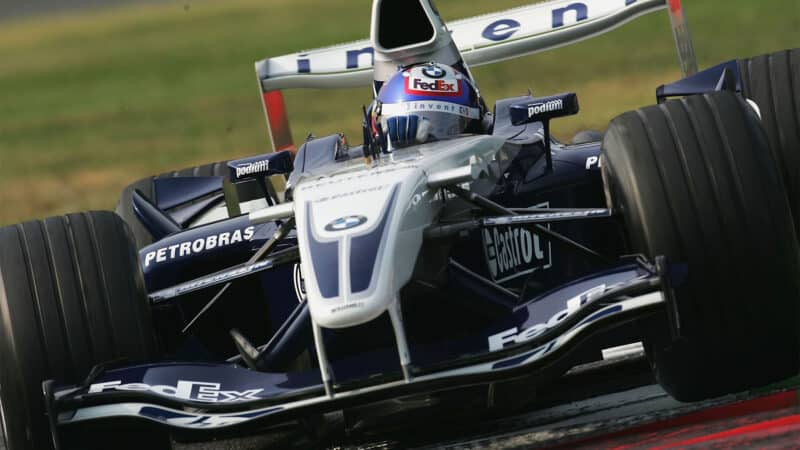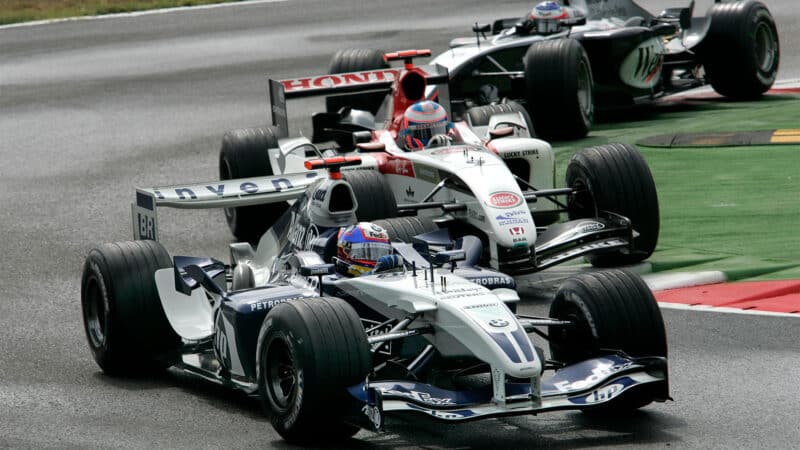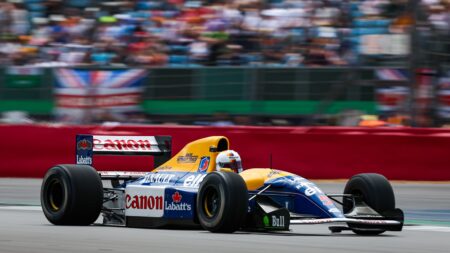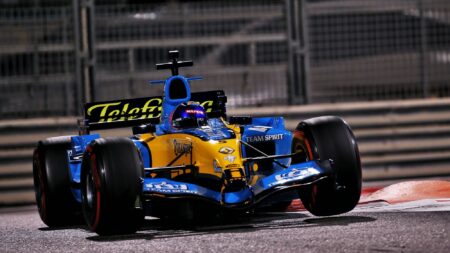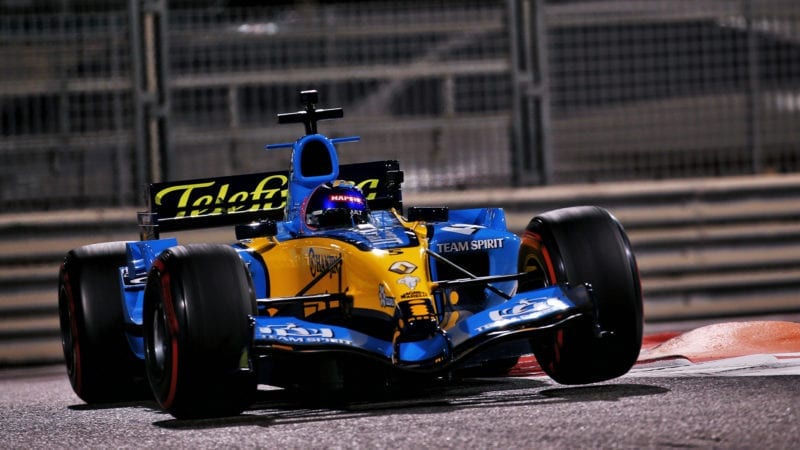Charles Leclerc told Autosport “I don’t like heavy cars – I drove a 2003 car and you can feel the difference,” while Lewis Hamilton said last year “I don’t understand why we go heavier when there’s all this talk about being more sustainable – just as the sport is going in that direction.”
However it’s Vettel’s runs at both Silverstone and Goodwood and his cherished FW14B and McLaren MP4/8 that Chandhok believes holds the key for an F1 return to V10s and lighter cars that he and many others would dearly love to see – one which could influence the direction of the world championship, particularly as part of a greener future.
“Seb has been doing it on his sustainable petroleum [P1 Fuels], which he says is cheaper than what current grand prix teams use,” emphasises Chandhok.
“Those heritage runs make you think ‘Do we really need hybrids? We can have V10s back, we can have the spectacle back’ – and this is where the FIA hasn’t been strong enough in its role as a governing body.
“If you look at global motor sport, Formula E is doing electrics and you’ve got Le Mans which has got a whole heap of different hybrids.
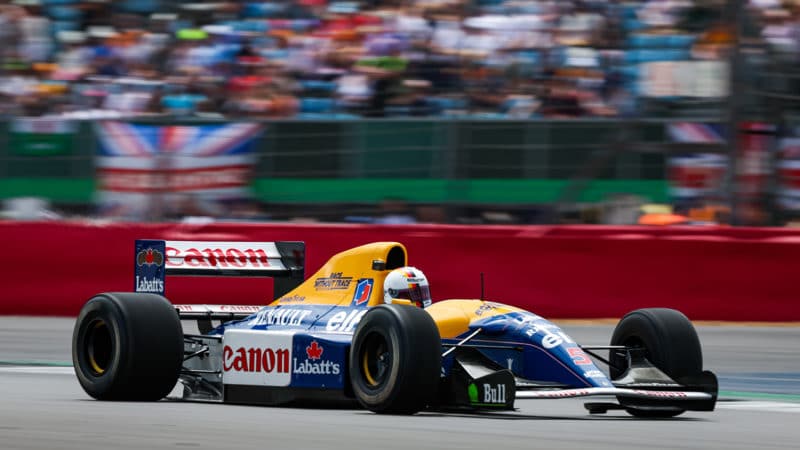
Vettel demonstrating his 1992 British GP-winning Williams with sustainable fuel
Florent Gooden / DPPI
“With all that going on, while sustainable fuels has been part of F1’s agenda, the world championship really should be leading on this [rather than hybrid engine formulas].”
For Chandhok, a move to sustainable fuels – as part of a reshaped green agenda – and switching from hybrids to naturally aspirated engines would solve multiple problems.
“If you took off the hybrid, the battery and all the recovery systems and all the electronics of course, you’ll lose over 120 kilos – then we can go back to making the cars smaller as well. It would tick a lot of boxes on weight and sound.” he says.
